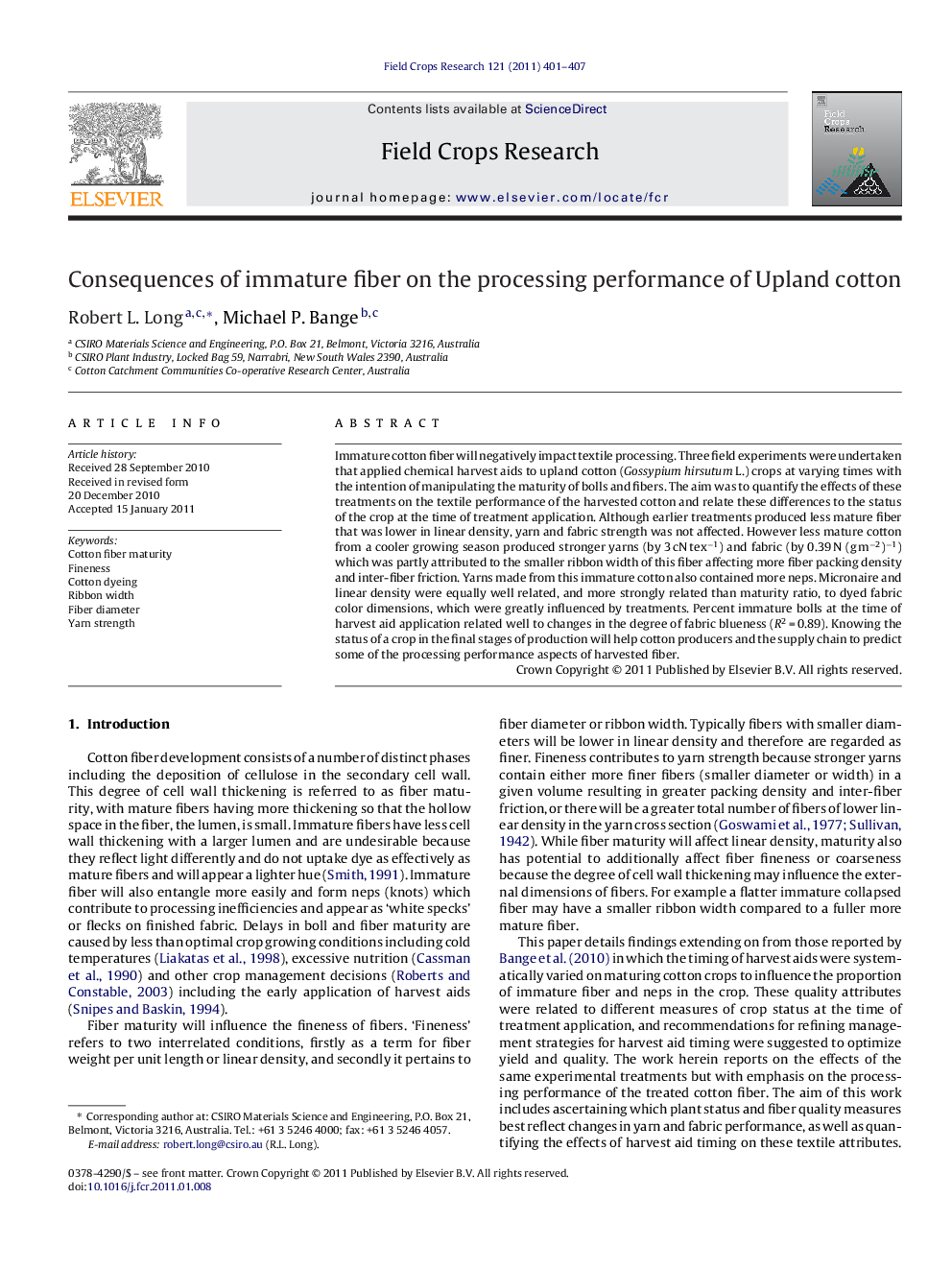| Article ID | Journal | Published Year | Pages | File Type |
|---|---|---|---|---|
| 4510818 | Field Crops Research | 2011 | 7 Pages |
Immature cotton fiber will negatively impact textile processing. Three field experiments were undertaken that applied chemical harvest aids to upland cotton (Gossypium hirsutum L.) crops at varying times with the intention of manipulating the maturity of bolls and fibers. The aim was to quantify the effects of these treatments on the textile performance of the harvested cotton and relate these differences to the status of the crop at the time of treatment application. Although earlier treatments produced less mature fiber that was lower in linear density, yarn and fabric strength was not affected. However less mature cotton from a cooler growing season produced stronger yarns (by 3 cN tex−1) and fabric (by 0.39 N (g m−2)−1) which was partly attributed to the smaller ribbon width of this fiber affecting more fiber packing density and inter-fiber friction. Yarns made from this immature cotton also contained more neps. Micronaire and linear density were equally well related, and more strongly related than maturity ratio, to dyed fabric color dimensions, which were greatly influenced by treatments. Percent immature bolls at the time of harvest aid application related well to changes in the degree of fabric blueness (R2 = 0.89). Knowing the status of a crop in the final stages of production will help cotton producers and the supply chain to predict some of the processing performance aspects of harvested fiber.
Research highlights► Harvest aid timing applications affected cotton boll and fiber maturity. ► Within season, early treatments did not affect yarn and fabric strength. ► Percent immature bolls related well to changes in fabric color (R2 = 0.89). ► Ribbon width is a new and potentially valuable fiber quality measure.
